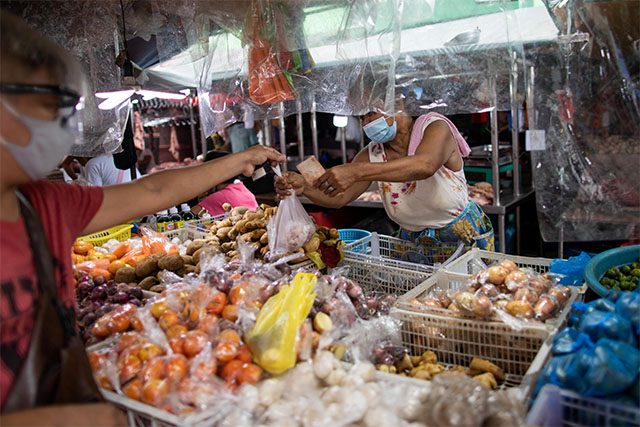
- Jan CPI reflects slower increases in food, utility costs
- Central bank says inflation on downward trajectory
- Central bank meets on Feb 17 to review policy
MANILA (Updated 9:54 a.m.)— Philippine annual inflation eased to 3.0% in January from the previous month’s 3.2% rate, the statistics agency said on Friday, reflecting slower increases in the price of food and utilities.
January’s inflation figure, which was slightly below the 3.1% forecast in a Reuters poll, used 2018 as the base year and, at least for now, suggests no sign of price pressures pushing policy makers to tighten loose monetary policy.
The Philippine statistics agency changed the base year for the consumer price index (CPI) to 2018 from 2012 starting in January, resulting in new weightings for components of its CPI basket.
The rebasing resulted in a lower average inflation rate of 3.9% in 2021, which was inside the central bank’s 2%-4% target.
“It supports the narrative that inflation is on its downward trajectory,” Bangko Sentral ng Pilipinas Governor Benjamin Diokno told reporters.
Inflation is projected to ease close to the midpoint of the central bank’s 2%-4% target range for 2022 and 2023, which should allow policymakers to maintain a stance of keeping interest rates low to support economic growth.
The central bank, which has kept its policy rate unchanged at 2.0% since Nov. 2020, will meet on Feb. 17.
Food and non-alcoholic beverages remain the biggest commodity group in the rebased CPI basket, with a 37.75% weighting, followed by housing, water, electricity, gas and a grouping with other fuels, which have a combined weighting of 21.38%.
The rebasing is done periodically by the statistics agency to reflect changing consumption patterns and align the base year with the one used for gross domestic product. —Reporting by Neil Jerome Morales and Karen Lema Editing by Ed Davies








